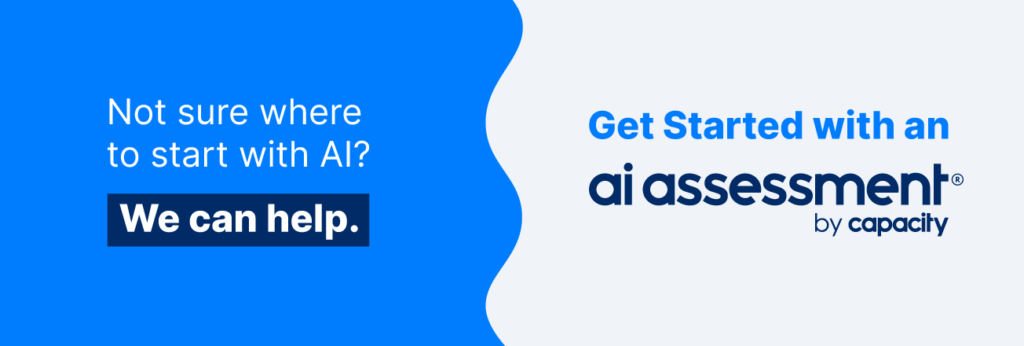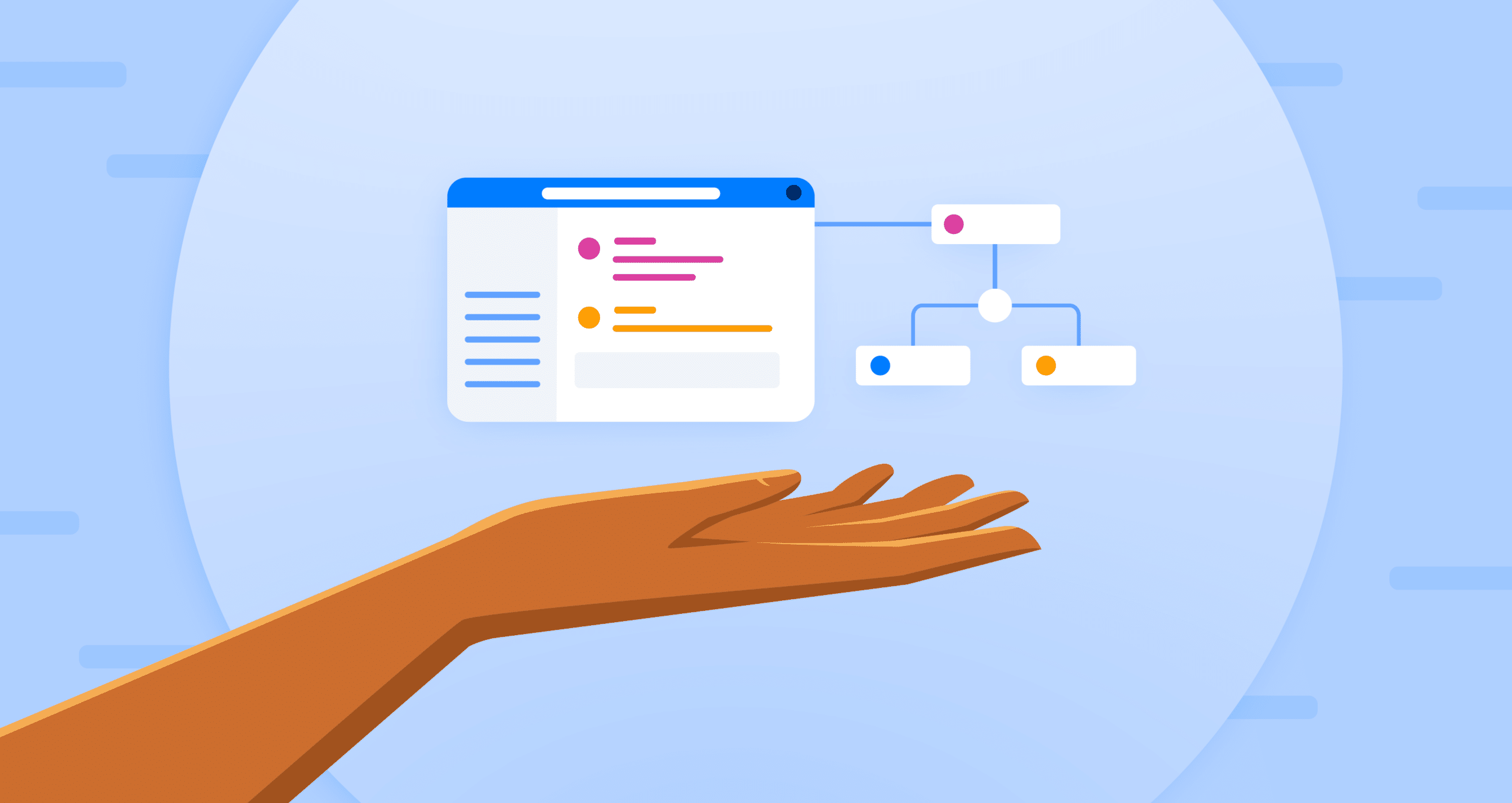We get it… change isn’t easy. Smart business leaders know that AI is more than a buzzword, it’s essential technology for the future of work. But just because it’s the future, doesn’t mean everyone is here for it. You might be ready to forge ahead with an AI roadmap, but unless leaders and decision makers are on-board, you’ll make zero progress.
Your bosses may not be the only leaders to be skeptical of AI. Trust in the tech still isn’t universal, but research shows that the path to acceptance of AI lies in explaining the benefits.
The Capacity team can help. Check out our four tried and true ways to make the case for an AI roadmap at your organization.
#1: Identify the Pain Points AI Could Solve
AI is big, bold and fast-moving. This can leave leaders feeling overwhelmed or plain confused about where to start. Rather than leading with a “let’s do AI” argument, focus on the pain points in your business and path forward. What are the processes that are repetitive, inefficient or expensive (or all three)? These are likely the places where an AI roadmap can help your business.
Elevate these examples to leaders and provide concrete explanations of how AI could help. These use cases will look different for every business, but here are a few examples that might get you started. AI can help teams:
- Avoid spending hours answering internal questions about vacation time.
- Free up customer service agents to solve complex issues by auto-responding to frequently asked questions.
- Authenticate callers with speech instead of lengthy confirmation conversations.
The opportunities are endlessly customizable to the needs of your organization. Focus on where your teams are really getting stuck, because AI can free up capacity.
#2: Focus on One Department
Enterprise-wide change takes years for most businesses. Leaders are likely to see nothing but dollar signs and strife when undertaking large-scale transformation. Don’t try to boil the ocean. Instead focus on one department to start.
At Capacity, we find many organizations have success with AI by using it first in Customer Support or Contact Center departments. In recent years, most organizations have been overwhelmed with call volume and have proven difficult to staff. AI and automation can provide valuable tools for self-service and agent assistance, improving the customer experience and bottom line along the way.
Take a close look at which departments in your business are struggling with repetitive tasks and crushing demand. Even entry-level AI tools could make a world of difference. Successful implementation and demonstrated results in one department will help you make the case for broader tech investment across the organization and help determine your AI roadmap.
#3: Remind Them of the Competition
It’s likely not what your bosses want to hear, but the stark reality is, your competitors are investing in AI. According to McKinsey, more than two-thirds of c-suiters expect their organizations to increase their AI investment by 2026.
It’s safe to bet that your competitors are investing in AI. Your business risks being left behind if you’re not.
#4: Don’t Go It Alone
While you may recognize the importance of an AI roadmap, you’re not alone if you’re struggling to understand how to develop a strategy and implementation plan.
If you’re not sure where to start with an AI roadmap, the team at Capacity offers a customized AI Assessment that will help you identify opportunities, prioritize solutions and implement new technology. Our team of pros at Capacity can partner with you to conduct a comprehensive analysis and develop a plan to increase productivity, eliminate inefficiency and boost customer and employee satisfaction with AI.
If your team is hesitant (or just plain resistant) to invest in AI, a Capacity AI Assessment can be a helpful first step in identifying opportunity and developing a potential implementation plan.
Ready to get started? Visit AIAssessment.com to learn more and connect with our team. The next step in your AI future is just a few clicks away.



